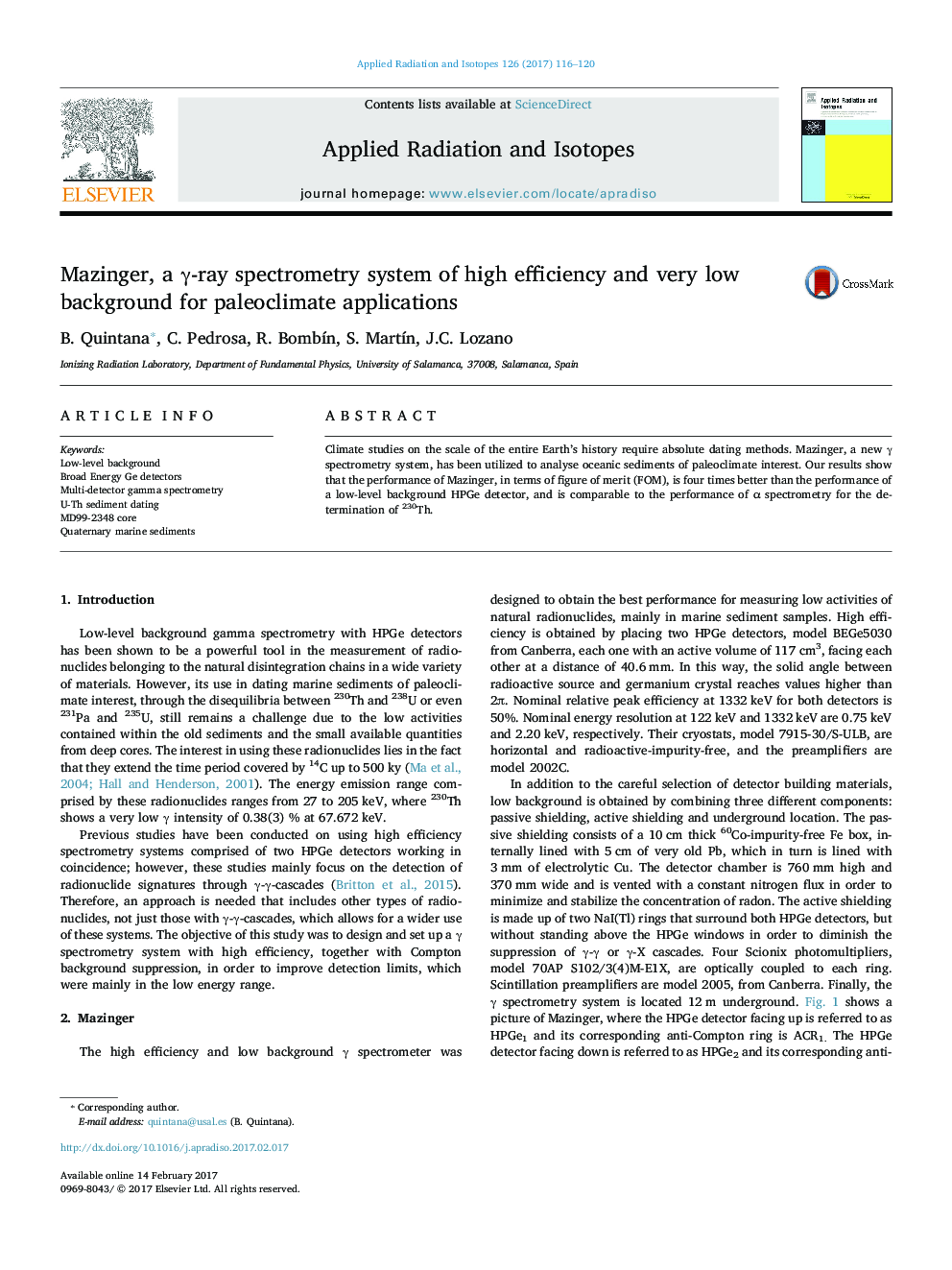| کد مقاله | کد نشریه | سال انتشار | مقاله انگلیسی | نسخه تمام متن |
|---|---|---|---|---|
| 5497828 | 1532071 | 2017 | 5 صفحه PDF | دانلود رایگان |

- Mazinger is a high efficiency and low background gamma spectrometer.
- Measurement of natural radionuclides in sediments of paleoclimate interest.
- Performance has shown to be enough and comparable to alfa spectrometry.
The study of changes in climate on the scale of the entire history of Earth requires absolute dating methods that cover the total time period. 230Th and 234U disequilibria, as well as 231Pa and 235U, have shown as good candidates to provide ages older than 50 ky. Therefore, they are the basis for a method that allows extending the 14C dating up to 500 ky or even further. The wide variety of samples, their high number and the fact that several radionuclides are needed to obtain samples' chronology make γ spectrometry to be a suitable technique in this task. However, its low efficiency and high background, therefore, high detection limits in comparison with α spectrometry, need to be improved to become a real alternative in samples with very low activity levels. With this purpose, Mazinger, a new γ spectrometry system based on two HPGe detectors, which are surrounded by active and passive shieldings and placed 12 m underground, has been set up in the Ionizing Radiation Laboratory of the University of Salamanca.In this work, the Mazinger's performance is studied at the full energy range useful for natural radionuclides. In composite detectors, energy resolution is a consequence of the electronics adjustments, which have to enable the raw spectra to be summed without resolution worsening. Therefore, the method used to set up electronics and add spectra is described. Detector background is also analysed and compared with the one of a single low-background HPGe detector as a function of the different shielding elements, obtaining gross values of order 10â4 cps. Efficiency and figure of merit are obtained for the main natural radionuclides in marine sediments belonging to the Mediterranean MD99-2348 core. Special focus is made on the 230Th determination whose results are compared with the ones provided by α spectrometry.Results show that Mazinger´s performance, in terms of figure of merit, is four times better than the one of a low-level background HPGe detector, specially suited to detect natural radionuclides, being comparable to the performance of α spectrometry in the 230Th determination, which is the radionuclide of lower γ intensity, and doing Mazinger a first class in radiometry of natural radionuclides.
Journal: Applied Radiation and Isotopes - Volume 126, August 2017, Pages 116-120